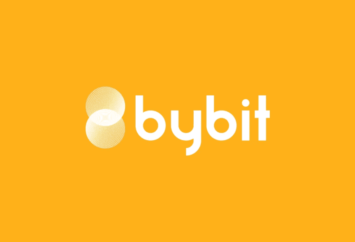
DeFi has been plagued by security issues. Wormhole hack is just another inevitable story.
In Feb 2,2022; an attacker exploited a security flaw to steal $320 million from the Wormhole DeFi platform. It is the 4th largest crypto hack of all time.

The article explains the details of the hack and gives some thoughts about security of Solana and DeFi.
What is the Wormhole?

The Wormhole is a DeFi platform for exchanging messages between blockchains or a cross-chain message passing protocol. The platform helps moving digital assets such as tokens and NFTs between Ethereum, Solana, Terra, Binance Smart Chain, Polygon, Avalanche, and Oasis.
In a simple explanation, the Wormhole is a typical blockchain bridge:
- To move N tokens from blockchain A to blockchain B. The token owner should lock N tokens into the bridge smart contract on blockchain A.
- After verifying N tokens locked, the bridge mint N equivalent tokens (or wrapped tokens) on blockchain B.
- To return N tokens. The token owner should burn N wrapped tokens on the bridge smart contract on blockchain B.
- After verifying N wrapped tokens burnt, the bridge will release N tokens on blockchain A
In the real world, it looks like how the old US gold certificates work. After depositing gold bars, the US bank issues gold certificates equivalent in value. The certificate was transferable and anyone could redeem it back to gold. The bank should manage the security of gold storage and against counterfeit gold certificates.
Like the gold certificates system, blockchain bridges have two main security concerns:
- Make sure locked tokens (gold bars) are safe.
- Make sure wrapped tokens (gold certificates) are valid.
The short version of the $320m hack
In Feb 2, 2022; an attacker managed to bypass the Wormhole verification to mint 120,000 wrapped Eth tokens on the Solana network (without 120,000 Eth tokens locked on the Ethereum network). Then he used the invalid 93,750 wrapped Eth tokens to redeem back to equivalent Eth tokens on Ethereum network. The rest of invalid tokens are sold for SOL tokens.
It is the same with a bank where the customers hold $320m gold certificates but have no gold bars in their vaults.
The attacker’s wallets:
- CxegPrfn2ge5dNiQberUrQJkHCcimeR4VXkeawcFBBka – on Solana 432,661.15 SOL ~51m USD
- 0x629e7da20197a5429d30da36e77d06cdf796b71a – on Ethereum 93,750 ETH ~287 triệu USD

The long version of the $320m hack
To understand the security incidents, we will brief the Solana programming model, the Wormhole programs, the root cause, and finally detail for the attack.
Brief of Solana programming model
- An app interacts with the Solana network by sending transactions.
- A Solana transaction have multiple tasks called instructions (other blockchain transactions is single task)
- An Solana instruction invokes a Solana on-chain program with a list of Solana accounts as input and an extra opaque data.
- A Solana on-chain program is equivalent to an Ethereum smart contract.
- A Solana account is an on-chain state equivalent to an Ethereum address which could be an on-chain storage or a smart contract.
Because Solana accounts passing to programs as inputs, so they are untrustable. The Solana document recommended:

The Wormhole programs
There are 2 programs involved with the hack:
- worm2ZoG2kUd4vFXhvjh93UUH596ayRfgQ2MgjNMTth – program guardian – source code

- wormDTUJ6AWPNvk59vGQbDvGJmqbDTdgWgAqcLBCgUb – program token_bridge – source code

The program toke_bridge has a complete_wrapped function at line 80 which performs minting wrapped tokens.

The complete_wrapped function require input #4: message_acc at line 253. The message_acc stores a signed message which commands minting wrapped tokens.
The message_acc constructed by invoke function post_vaa from the guardian program

Function post_vaa validates the message (which contains a minting command) against signature_set at line 189 then builds the message_acc for function complete_wrapped to perform the minting process.
The important signarture_set account grabbed from function verify_signatures

Notice the #4 input of the verify_signatures at line 153 is a very special sysvar:instructions account.
The function verify_signatures requires the special account because it is supposed to work with a previous instruction.

A sample of Wormhole verify_signatures transaction have 2 instructions:
#1: call secp256k1 to extract signatures from the message
#2: call verify_signatures to verify the previous signatures and return the important signature_set.
To access the previous instruction data, the verify_signatures require the special sysvar:instructions account.
The sysvar accounts are populated by Solana runtime to provide runtime information. They are equivalent with Solidity global variables such as block.timestamp, msg.data or msg.sender.
The main difference is that in Ethereum those values are hardcoded and in Solana they are dynamically provided via input accounts. And Solana reccommend programs must take responsibility to validate those accounts.
To summary Wormhole minting flow:
- Call a transaction with 2 instructions: secp256k1 with minting message and guardian.verify_signature to build a valid signature_set.
- Call guardian.post_vaa with valid signature_set and message to build a valid message_acc.
- Call token_bridge.complete_wrapped with valid message_acc to mint wrapped token.
The root cause
It is clearly that the Wormhole developers forget to check #4 input of function verify_signatures is a real and valid sysvar:instructions account.
Solana developers also realize that it is a common and recurring problem. They updated Solana SDK to deprecate unsafe functions. The new functions automatically check sysvar account addresses before deserialize data.

Unfortunately, Wormhole developers did not update the critical verify_certificates function and leave the issue for the attacker to exploit.

This is the source code that contains the security flaw. Notice it used deprecated load_current_index and load_instruction_at against the input of sysvars:instructions account without checking it is a real one.
Image that the attacker read the deprecated notices from Solana SDK. He realized that it is a recurring issue. Performed a simple text search against random Solana-based DeFi source codes , he found the Wormhole security flaw and the rest is history.
Detail of the attack
- The attacker created a malicious account with fake instruction data. 2tHS1cXX2h1KBEaadprqELJ6sV9wLoaSdX68FqsrrZRd
- Call verify_certificates which replace #4 input account from sysvar:instructions to the malicious 2tHS1cXX2h1KBEaadprqELJ6sV9wLoaSdX68FqsrrZRd

Tx: 2SohoVoPDSdzgsGCgKQPByKQkLAXHrYmvtE7EEqwKi3qUBTGDDJ7DcfYS7YJC2f8xwKVVa6SFUpH5MZ5xcyn1BCK
Notice a normal Wormhole transaction requires 2 instructions: secp256k1 and verify_certicates. But the attack Wormhole transaction has single verify_certicates??? It is because the attack transaction controls the instruction data then it fakes all information even though there is no secp256k1 called.

At line 92, the payload 2tHS1cXX2h1KBEaadprqELJ6sV9wLoaSdX68FqsrrZRd account returns 1 even current_instuction is 0.
At line 101, the payload 2tHS1cXX2h1KBEaadprqELJ6sV9wLoaSdX68FqsrrZRd account returns the attack payload even though no secp256k1 called.
3. Call post_vva which valid signature_set EtMw1nQ4AQaH53RjYz3pRk12rrqWjcYjPDETphYJzmCX created from verify_certificates

Tx: 2SohoVoPDSdzgsGCgKQPByKQkLAXHrYmvtE7EEqwKi3qUBTGDDJ7DcfYS7YJC2f8xwKVVa6SFUpH5MZ5xcyn1BCK
4. Complete minting wrapped eth by using message account GvAarWUV8khMLrTRouzBh3xSr8AeLDXxoKNJ6FgxGyg5 created by post_vva

Tx: 2zCz2GgoSS68eNJENWrYB48dMM1zmH8SZkgYneVDv2G4gRsVfwu5rNXtK5BKFxn7fSqX9BvrBc1rdPAeBEcD6Es
5. The attackers used wrapped Eth to drain the Wormhole Eth pool. Remain wrapped Eth sold for SOL token to complete the hack.
Some thoughts about the hack
- Solana is a young project and ecosystem. Expect more incidents in future unless serious security investment from the community.
- Stop assigning normal developers to design and coding DeFi The typical practice of the DeFi industry is to have developers coding smart contracts and to have blockchain security providers review the final products. It is like a bank hiring a house contractor to build their gold vault. The best practice is hiring blockchain security developers to build the products and have other blockchain security vendors review and cross-check their works.
- The main issue is lack of resources in DeFi security. The shift of security paradigm from centralized, server-side security to decentralized, client-side security is huge. It requires not only code-level security, but also overall design, code life-cycle, business logic and so on …



